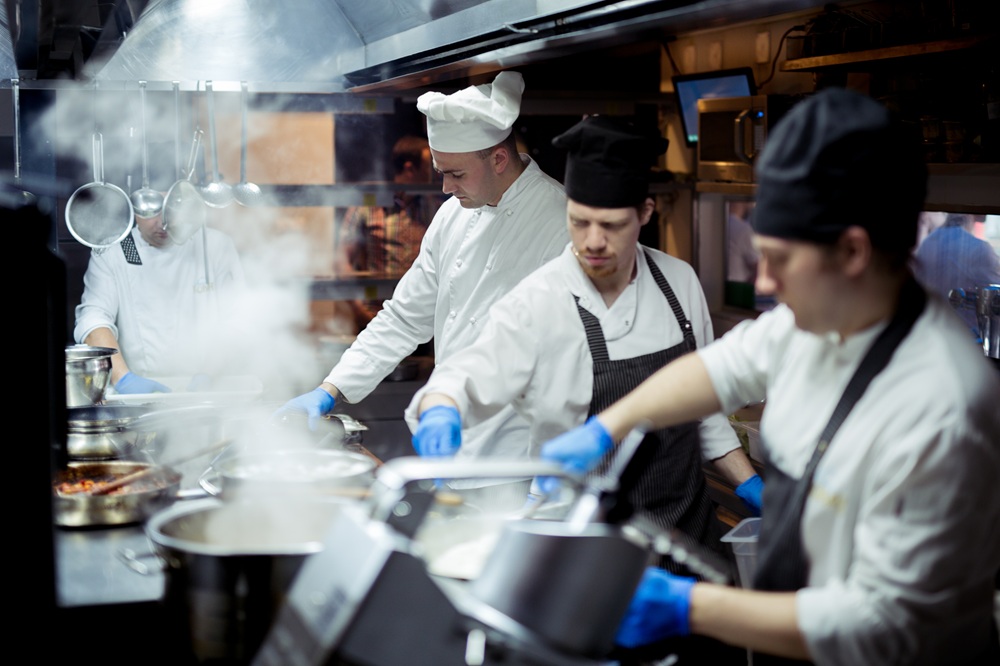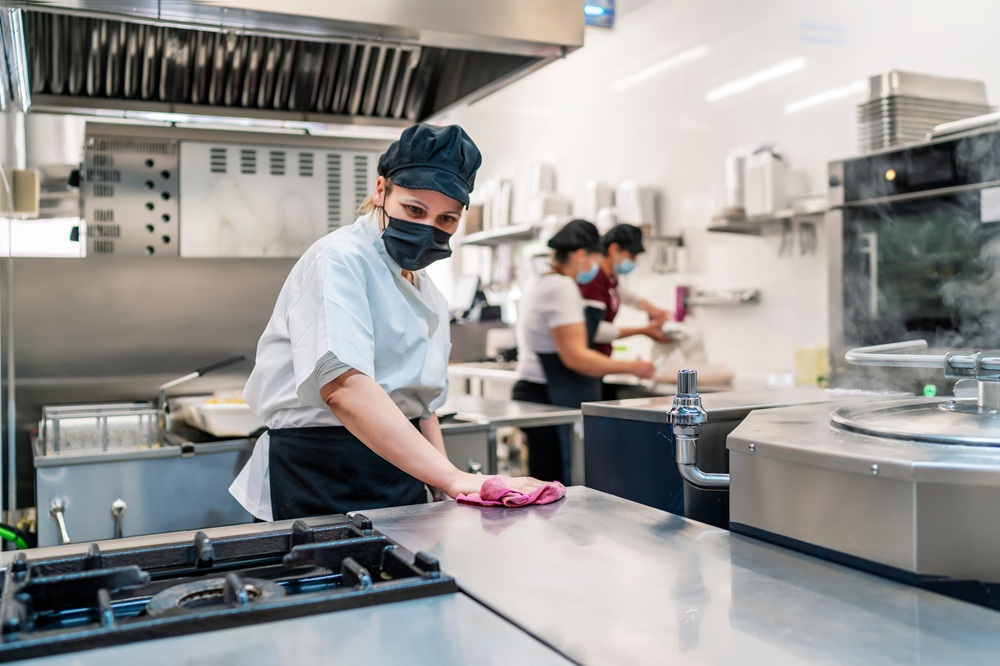As a restaurant owner, you are responsible for providing delicious food that is prepared and served in a safe way to your customers. Failure to do so can lead to upset stomachs, food-borne illnesses, and in rare cases, even more dire consequences.
A food safety complaint will ruin your business’s reputation and make it harder to attract more clients. This is why it is important to be aware of all restaurant health code violations and the ways you can prevent them so you can pass your health inspections with flying colors.
What is a restaurant health code?
A restaurant health code is a system of regulations that sets and assesses the standard of hygiene and food safety for all food businesses, be it casual restaurants, food trucks, or ghost kitchens.
The codes are enforced by the local health department through regular inspections. They analyze factors such as food handling, ingredient storage, food preparation, employee hygiene, and kitchen cleanliness.
Restaurant health code violations happen when the business breaks rules related to hygiene and safety. For example, pest infestation and improper labeling.
Why is it important to avoid health code violations in restaurants?
Preventing restaurant health code violations is important both for your customers and for your business’s long-term success.
When food safety rules are broken, clients may:
- Get ill and report you to the authorities, which will lead to a surprise inspection;
- Write bad reviews and tell friends and family to avoid your restaurant, leading to a damaged reputation.
If the health inspector notices health code violations, you risk:
- Fines according to the severity of the problems;
- Temporary closure until the issues are resolved;
- Permanent closure in rare cases, when a big risk is detected.
Read more: How to Ensure Restaurant Food Safety & Why It Matters
What is the health rating of restaurants
As part of a health department inspection, the responsible people will grade your restaurant and sometimes publish the grade for customers to see. That grade will then influence potential clients’ decision to visit you, as no person wants to risk their health for some delicious food.
The grading system will differ from country to country and even from city to city. Here are some well-known examples:
- In the UK: there is the Food Hygiene Rating Scheme (FHRS) that uses a rating scale from 0 to 5, where 0 means Urgent improvement is necessary and 5 means Hygiene standards are very good. Customers can check the official website to see the rating if it is not displayed in the restaurant;
- In New York: the assessment starts at zero points and points are added for every violation. So the lower the score, the better the health rating for the restaurant;
- In Boston: the grading starts from 100 points, and points are taken away for each violation. Therefore, in Boston, health-compliant restaurants will have a higher grade.
How often do restaurants get inspected?
Just like the grading system, the frequency of inspections can vary according to region, risk, and previous violations. It can be every six months, every two years, or every three years. If you’ve previously acquired a bad grade, you can expect more often visits.
List of restaurant health code violations & how to prevent them
If you want to be prepared for any surprise health department inspection, you need to be aware of all restaurant health code violations and have plans in place to prevent them. The list below will help you get a better idea of what you must avoid and how:
1. Cross-contamination
Cross-contamination can occur at any step in the food preparation process, from storage to serving. For example, cutting vegetables on the same cutting board as chicken or touching rim glasses when handing them to customers.
Cross-contamination can lead to even more dire consequences when you serve allergy-friendly dishes. If a person is served gluten in a dish advertised as gluten-free, they may get seriously ill.
How to prevent cross-contamination:
To avoid restaurant health code violations regarding cross-contamination, you need to persuade employees to get the food handler’s certification, which teaches them how to understand and prevent the risk of contamination.
It can also be helpful to have signs with prevention tips in key places in the kitchen.
For allergy-safe dishes, you need to have separate working spaces according to the allergen that must be cleaned often. Moreover, you can accurately mark the allergens present in the dish on the menu, so clients are informed.
You can do so by using the free online menu creator from GloriaFood that allows you to add allergens and nutritional information to each dish in a couple of clicks.
[embed_video provider=”youtube” url=”https://www.youtube.com/watch?v=fpU2s7Li3W0“]
2. Poor employee personal hygiene
Employees are the most common cause of foodborne illnesses. They can easily spread disease if they come into work sick or contaminate dishes if they don’t wear the proper uniform and wash their hands often.
How to avoid poor employee personal hygiene:
If you want your staff to pass any health inspection, you must provide them with hygiene training that should include:
- Proper uniforms such as hairnets, masks, and gloves;
- Which sink to use for washing hands and how to do it properly;
- No rings, bracelets, or watches while prepping food.
You can also assign a manager with the duty to monitor kitchen staff and remind them of the rules if they notice a violation.
Read more: 10 Practical Restaurant Kitchen Rules and Regulations for Staff to Abide by
3. Badly maintained equipment
Equipment that is improperly cleaned can store ingredients that go bad and then contaminate new batches of food. Moreover, if a piece of equipment malfunctions, it can affect the safety of the employees and delay operational processes.
How to prevent badly maintained equipment:
Schedule a maintenance session for each piece of equipment at least once every six months or more often if you use it more than once a day. Furthermore, have a strict cleaning schedule for equipment, including parts that are hidden or hard to remove.
4. Improper temperature control
One of the most common restaurant health code violations is improper temperature control, which can lead to bacterial development and the spread of foodborne illnesses. For example, fish and meat that are left outside to thaw, or dishes left on display without proper temperature control.
How to avoid improper temperature control:
To prevent this, restaurants should invest in reliable refrigeration equipment like upright fridges to maintain consistent cooling and food safety standards.
Creating standard restaurant operating procedures and enforcing them is the best way to create efficient and safe food preparation processes.
5. Improper food storage
Food storage mistakes not only lead to food waste, but they can also be health code violations if an unfit ingredient reaches the customers’ plates. Moreover, improper food storage can lead to cross-contamination if raw chicken is stored next to vegetables.
How to prevent improper food storage:
Implement an inventory management system and follow strict storage rules, such as:
- Labeling containers with the storage date and expiry date;
- First in, first out rule: the ingredient that first went into storage must be the first to be used for food preparation;
- Store meat separately from other ingredients.
Read more: 10 Simple Restaurant Organization Ideas from Kitchen to Storage
6. Unacceptable cleaning supplies storage
To prevent foodborne illnesses, you must use strong chemicals to clean your commercial kitchen. But the way you store your cleaning supplies will be heavily scrutinized by the health inspector, as sanitation equipment should never be near the food preparation area.
How to avoid unacceptable cleaning supplies storage:
Heave a designated area for cleaning supplies, use clearly labeled bottles for sanitizers, and check local regulations to ensure you are using the right concentration of chemicals for cleaning.
7. Irregular tool and utensil storage
Some restaurant health code rules can easily be overlooked, some as tool and utensil storage. But cutting boards or serving platters that are stored improperly can trap moisture and eventually develop bacteria and mold.
How to prevent irregular tool and utensil storage:
Create a kitchen layout that provides enough space for air drying each tool and utensil used in the kitchen. As each one needs to be air-dried, you must have space to dry them upright and away from the kitchen traffic to prevent any potential accidents.
8. Poor kitchen sanitation
Some of the most popular restaurant health code violations involve kitchen sanitation, with dirty surfaces in hidden spots. For example:
- Rusted shelving units where you dry dishes and utensils;
- Grease buildup on equipment;
- Food debris underneath equipment and cooking surfaces.
How to avoid poor kitchen sanitation:
If you want to pass the health inspection, you must implement a strict cleaning schedule with detailed responsibilities. You can also have a person responsible for checking the cleaning at the end to ensure there were no hidden places ignored.
Read more: The Ultimate Restaurant Cleaning Checklist [Free & Easy]
9. Incomplete record keeping
When an issue occurs, it is important to be able to trace it. You may discover the problem came from the suppliers, in which case you must start the search for new ones. The health inspectors will also want to look over your records to ensure everything is accounted for.
How to prevent incomplete record keeping:
An inventory management system will help you keep track of each ingredient and when you purchased it, improving traceability.
Integrating food traceability software takes this a step further by allowing you to monitor ingredients from supplier to plate, ensuring full compliance with food safety regulations. Employee training on record-keeping will also be helpful.
If you want to further improve your record keeping, use an efficient POS system, like the one from GloriaFood, that will allow you to see restaurant reports at a glance, from how many sales you made, to what your best-selling dishes are.
10. Inadequate pest control
When the temperatures rise, pests will start looking for food. And a commercial kitchen with plenty of ingredients can be very attractive for them. Moreover, improperly stored food can also lead to pests such as flour moths.
How to avoid inadequate pest control:
Start by creating a great storage system that ensures ingredients are used before they start producing or attracting pests. Then, seal any gaps and holes that allow pests to break in. Lastly, apply pest-control treatments often to deter any unwanted visitors.
Final words
Restaurant health code violations can have dire consequences for your business, which are better prevented than dealt with after. Therefore, take the time to implement procedures and create systems that ensure you prepare and store food safely so that you will pass any surprise health inspection.






